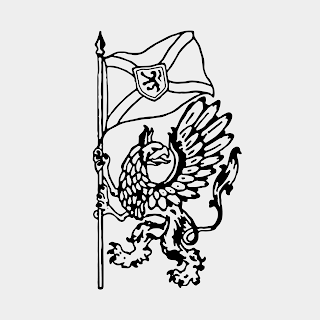ANSM Updates
In case you missed it, May was a very exciting month here at ANSM. We welcomed not one, not two, but three new people! Brittany Houghton joined us as Member Services Coordinator, and Emma Bronsema and Madeline Hoyle joined us for summer internships. It is lovely to have some fresh faces and ideas in the office, and all three are very excited to get out to museums this summer.
One of the first places you'll see these fresh faces is at our AGM, coming up on June 10th at 10am on Zoom. The link will be circulated this week so keep an eye on your inbox.
TRACK Updates
Museums are slowly but surely registering for the new TRACK program, our replacement to the Museum Evaluation Program. For any CMAP recipients, remember that this is a new requirement to access that funding. The Nova Scotia Museum is also asking their sites to register. This means that in the very near future we will be reaching out to any of these museums that have not yet registered.
Feedback on the draft assessment document is now coming in. Madeline is compiling the notes as they arrive, and once we hear back from everyone we'll be meeting again with the working to finalize the document for piloting. We should again extend a big thank you to the museums that are testing the assessment tool. Everyone we approached said yes, and we recognize how significant that is.
If you or anyone at your museum missed out on the TRACK announcement or info session, our website has lots of info for you. Click here to register for the program.
Site Visits
Brittany, our new Member Service Advisor, is undergoing the process of planning the in person site visits this summer. If you receive an email asking to confirm a date, please respond promptly. You all know what a juggling act this is, so the sooner we can settle the dates/times the better. Her goal is to visit half of the Advisory Service museums in person and meet with the other half virtually. This approach allows for better support to all sites over the course of the summer season. Those who received virtual visits last year and those who have had a change of staff at the curator level will be top priority for in-person visits this year.
There will be no Hub Training sessions this year, rather we are working on planning Community Gatherings, where we are inviting members of the founding communities of Nova Scotia: Mi'kmaq, Acadian, Gaels and African Nova Scotians to join surrounding museums at a number of different sites throughout the province. We encourage you to join us for these sessions! We're still working on ironing out all the details but more information to follow.
Maggie and Karin will also be out on the road some this summer for MAP strategizing, TRACK piloting, and Accreditation plaque deliveries. Lots of planning happening right now, so stay tuned!
CollectiveAccess Updates
We can always tell when summer staff arrive because database numbers skyrocket. This is exciting, but it unfortunately also means we need to remind museums to provide their new staff with appropriate training. Giving someone a login to the database doesn't mean they know how to use it or will do good work. So please, save yourselves the headaches later on and orient your staff, check their work regularly, and remind them that they can reach out to you and to us with questions any time. We are here to help! And it's so, so, so much easier to take the time to train now than to clean up messes later. As much as we hate to say it, we are already seeing some messes going into databases. This reflects poorly on the museum and on all contributors to NovaMuse.
To happier thoughts, 9,729 new records and 731 new images went into the databases this month, giving us grand totals of 350,722 records and 319,767 associated media files. It is so wonderful to see that gap closing. When we first started using CollectiveAccess 10 years ago, only 39% of records had images attached. Now we're sitting at 91%. Such amazing improvements both in terms of collections management practices and in public trust and transparency. Let's break down these numbers by the regions so we can see how each is doing:
Southwest: 148,013 records and 106,072 images Central: 108,509 records and 106,429 images Northeast: 61,148 records and 81,598 images Cape Breton: 33,052 records and 106,429 images
For your artifact image lesson of the month, we wanted to pull out an old favourite. This is just a beautiful photograph. To quote Mary Poppins, practically perfect in every way. The teapot is lovely to begin with, but has been centred and framed in the image, a pale background used to provide excellent contrast with the dark blue and gold, and the scale perfectly tucked in the lower left corner. The shot is angled just enough to give the viewer a sense of depth and shape without feeling unnatural. Additional photos include shots of just the pot, just the plate, just the lid, and close up details of decoration. This level of artifact photography is aspiration. And achievable. So remember to take your time, train your new staff and volunteers, and encourage them to seek advice and assistance when needed.Educational Partnerships
In addition to our summer interns, this month Karin started teaching a course at SMU. All of the students are big fans of and eager to learn more about museums. Once the spring seminars wrap up the students will be doing a summer practicum which will have them engaged in our MAP project and community gatherings. We're excited and curious to see where this partnership goes. We see so many opportunities.








